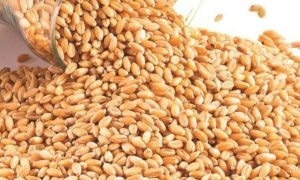US: USDA sees ample sugar supplies this year and next

The global cane sugar market is projected to grow from USD 61,318 million in 2024 to USD 86,011 million by 2034, driven by demand in the bakery and confectionery sectors. Despite health concerns and raw material volatility, rising consumer interest in desserts fuels growth. Automation and innovation in production are also enhancing efficiency, supporting expansion in this sector.
The US Department of Agriculture in its Sept. 12 World Agricultural Supply and Demand Estimates report projected the US 2023-24 sugar ending stocks-to-use (S-T-U) ratio at 18%, the highest since 18.7% in 2004. The issue with the ratio is the make-up of supply that pushed it to a two-decade high.
The 18.7% S-T-U ratio in 2004 was the final estimate for that year, which came a couple of months after September. In September 2004 it was even higher at 21.5%. That year domestic sugar production for 2003-04 was forecast at 8,857,000 short tons, raw value, equal to 72% of total supply of 12,274,000 tons. Beginning stocks were 1,661,000 tons, equal to 14% of supply. The third leg of supply, total imports, were estimated at 1,756,000 tons, equal to 14% of supply.
In September 2024, the USDA estimated total 2023-24 US total sugar supply at 14,941,000 tons, consisting of 1,843,000 tons of beginning stocks (12% of the total), 9,474,000 tons of domestic production (62% of supply) and 3,834,000 tons of imports (26% of supply).
Imports have become a larger piece of the US sugar supply in the past few years as domestic production hasn’t kept up with demand, and the North American Free Trade Agreement opened the US market to sugar from Mexico in 2008, which was limited after Mexico flooded the US market in 2013 and 2014.
But Mexico isn’t the problem in 2024.
Digging into the import numbers for 2023-24, they consist of 1,823,000 tons of tariff-rate quota (TRQ) imports (low-duty imports required under World Trade Organization agreements), 320,000 tons of “other program” imports (re-export sugar), 520,000 tons from Mexico (down 55% from 2022-23) and 1,170,000 tons of high-tier imports (up 157% from the prior year). In 2003-04, the USDA estimated TRQ imports at 1,226,000 tons, “other program” at 480,000 tons and “other” at 50,000 tons. The other category included high-tier and still more other, with high-tier not broken out until a few years later.
High-tier imports in 2023-24 account for 31% of total imports and 8% of total supply. In 2003-04, the other category that included high-tier barely made up 2.8% of total imports and 0.4% of total supply.
High-tier imports typically were a supply of last resort as they were the most expensive sugar available after adding an import duty of more than 16% plus freight.
Prior to 2019-20, when a freeze in the Red River Valley devastated the US sugar beet crop and high-tier imports were needed to meet US sugar demand, high-tier imports typically were barely 50,000 tons annually. If that were the level of high-tier imports in 2023-24, the ending stocks-to-use ratio would be 9.1% rather than 18%. That would have prompted a tariff-rate quota increase earlier in the year that would have boosted supply but at a lower price.
The market has changed considerably since 2003-04, as has the way the USDA arrives at its estimates. The market structure has changed with the rise of non-traditional melters and refiners that depend on imported supplies. Also significant in the past couple years was the USDA projecting high-tier imports rather than reporting them after arrival as in the past. The impact of projecting high-tier imports tends to be a self-fulfilling prophesy as it boosts the total supply and raises the ending S-T-U ratio that then appears to reduce the need for lower-priced TRQ imports.
The more expensive high-tier imports also tend to prop up the price of sugar in the domestic market. In 2004, the price of Midwest beet and refined cane sugar was below 30¢ a lb. In 2024, beet sugar is around 50¢ a lb and refined cane around 60¢ a lb. Granted, producers’ production costs have risen significantly since 2004 and 30¢-a-lb sugar is unrealistic. At the same time, one must ask if sugar at 50¢ and 60¢ is equally unrealistic for buyers.
Another complication that may be developing is difficulty experienced by US beet sugar processors to sell all their supply into a market saturated with high-tier imports. That ultimately could result in a negative outcome for producers rather than a scenario of higher domestic prices propped up by high-priced imports.
The bottom line is ample sugar supplies are likely this year and next year. The issue is that the ample supplies have come at a cost.
Source: https://www.foodbusinessnews.net/articles/26892-usda-sees-ample-sugar-supplies-this-year-and-next














